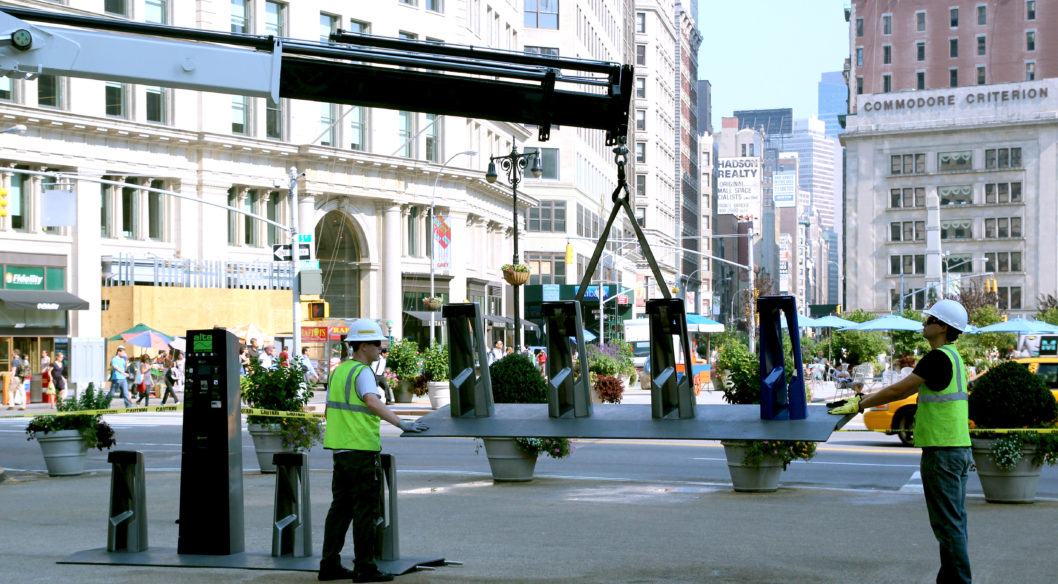At this stage, once a decision has been made on whether the city will move forward with a
station-based, dockless, or hybrid bikeshare system, either public or privately-run, the city
should consider options for the hardware and software of the system, including bike type
(standard versus pedal assist) and station design (physical stations with docks. drop zones for
dockless bikes, or a combination). It is also important at this stage to analyze the potential for
improving bike infrastructure and street efficiency, which not only benefits users of bikeshare
but cyclists more generally, as well as pedestrians and transit riders. A bikeshare system can
be viewed by some as adding to the competition for sidewalk space, green space, etc. Cities
may be able to curb these sentiments by prioritizing the development of streetscapes that
maximize space and usability for all sustainable transportation modes.
Station-based bikeshare system design and planning apply the parameters discussed in
section 3.2 to determine the exact locations and sizes of stations. Stations should be roughly
uniform distance from one another and sized to meet the anticipated demand and attraction
of a particular area. The station location will then depend on the actual environment of that
area. The station density decided on in the feasibility stage should be more or less adhered to,
although some factors may influence this. For example, areas that are more densely populated
may require more stations than the stated parameter, while other areas such as large parks or
industrial areas, may require fewer because of land use and existing conditions. However,
reliable coverage through uniform station density, or at least a minimum station density, is
critical to creating a system that users can truly rely on for travel within and around the
service area.
Alternatively, the city is less involved in infrastructure planning for a dockless bikeshare
system because private operators have already made decisions around the type(s) of bike they
offer and where to deploy and rebalance bikes based on demand. Station design is less
necessary relative to a station-based bikeshare system, although the city should, at this time,
consider whether to create dockless bikeshare parking zones and what those might look like
(for example, will bike racks be installed in parking zones to accommodate personal and lockto
bikes?) and/or install additional racks to increase overall bike parking. It should also
consider whether to mandate that operators encourage users—perhaps through reduced fare
incentives—to park there. Implementing this type of parking system at the outset may help to
avoid user confusion and establish habits for users to utilize the designated parking zones.
Despite the system type, knowledge of existing trip patterns can help determine demand for
bikeshare. Most cities use local knowledge to estimate demand and how it might vary
throughout the day and across days. To get an idea of popular destinations in the area,
origin destination (OD) surveys can be conducted at major public transport terminals and stations,
focusing on passengers who transfer to rideshare, taxis, or buses to complete their journey.
This can help to determine where the system is most likely to succeed and to anticipate
demand. However, this type of survey will not capture potential users who are not currently
well served by transit, so complementary outreach to the public should be conducted to
assess demand from those populations.

